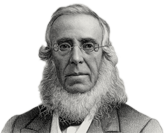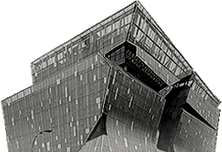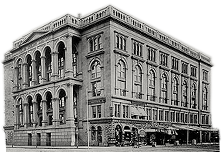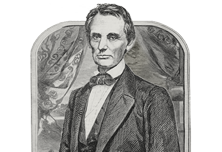Menschel Application Guidelines
A Guide to the Menschel Fellowship Application Process
The act of applying for this fellowship is itself a form of research. It asks you to identify what truly compels you, to imagine how you might pursue it, and to consider what your investigation could offer others.
The Menschel selection committee looks for projects that demonstrate clear purpose, rigorous methods, and potential for meaningful contribution. They value work that opens new possibilities for understanding and creation, that builds bridges between fields of knowledge, that makes visible what we haven't seen before.
The committee evaluates proposals based on:
- Clarity of research question and methods
- Potential for meaningful contribution
- Feasibility within timeline and budget
- Strength of interdisciplinary connections
What follows is a guide that outlines the key elements of a strong proposal.
Research as Creative Inquiry
Begin with what genuinely interests you. Look for questions that emerge from your work but extend beyond it, problems that matter beyond your discipline. Consider what methods you might need—not just those you already know, but those you'll need to develop or adapt. Research in this context means systematic investigation, whether through material experiments, site observations, archival study, or other forms of rigorous inquiry.
The proposal should make clear not just what you want to study, but how you plan to study it. What specific methods will you use? What will you need to learn? How will you document your process? The fellowship supports work that develops new ways of knowing, not just new things to know.
Beyond Cooper's Walls
Many projects require investigation beyond campus. If your research involves travel, explain why specific locations matter to your inquiry. What can you learn there that you couldn't learn here? How will you gather and document what you find? Consider how your discoveries might return to Cooper Union in meaningful ways.
Crucially, demonstrate that your proposed fieldwork is necessary and substantive. Projects must articulate why on-site research is irreplaceable. This means showing you've already conducted preliminary research—consulted existing sources, mapped current scholarship, identified specific gaps your fieldwork will address. A compelling proposal reveals what existing resources cannot provide: direct observation, material encounters, conversations unavailable through archives. Your application should make clear how your physical presence transforms abstract questions into nuanced understanding.
Resources and Requirements
The fellowship provides up to $4000 per project. Your budget should detail anticipated expenses, including materials, travel if necessary, and exhibition costs. We recommend reserving 15-25% of your budget for the costs of mounting the final exhibition.
The exhibition is not an afterthought but an integral part of the research process. It asks you to make your inquiry visible and accessible to others. Consider how you might present not just conclusions, but the journey of investigation itself.
Working Together
While individual applications are welcome, the fellowship encourages collaboration, especially across disciplines. If you propose a group project, consider how different perspectives and methods might strengthen your inquiry. What can you learn from each other's approaches? How might your combined expertise open new possibilities?
Time and Structure
Your timeline should account for the full arc of research: initial investigation, method development, documentation, analysis, and public presentation. Consider what each phase requires. Build in time for unexpected discoveries and necessary adjustments.
Developing Your Proposal
Start early. Discuss your ideas with potential faculty advisors. Visit the Center for Writing. Review past fellowship projects. Let your proposal evolve through conversation and revision.
Remember that the final exhibition will happen in January or early February. Work backward from there to create a realistic schedule. Consider what you'll need to document along the way, what form your presentation might take, how you'll invite others into conversation with your work.
Advisory Relationship Statement
Your project will benefit from a committed advisor — someone who will engage with your research as it unfolds. This statement, which you'll develop with your advisor, describes your working relationship. You may draft it together or propose the terms yourself, but in either case, you and your advisor should explicitly agree to it.
The statement should be brief but specific. Address:
- What draws this advisor to your project. A sentence or two about shared interests or complementary perspectives.
- How you've worked together before. Provide a specific example about the context and situation that showed you could collaborate effectively.
- When and how you'll meet during the fellowship period. Regular check-ins? Studio visits? Email updates?
- What kind of guidance you'll need. Method development? Technical advice? Critical feedback?
Your advisor signals their agreement by signing the statement you submit with the application. The statement can be authored by the student, the advisor, or in collaboration between the two; the agreement matters more than who writes it.
Think of this as your first act of research: articulating what you need to know and finding someone who can help you discover it.




